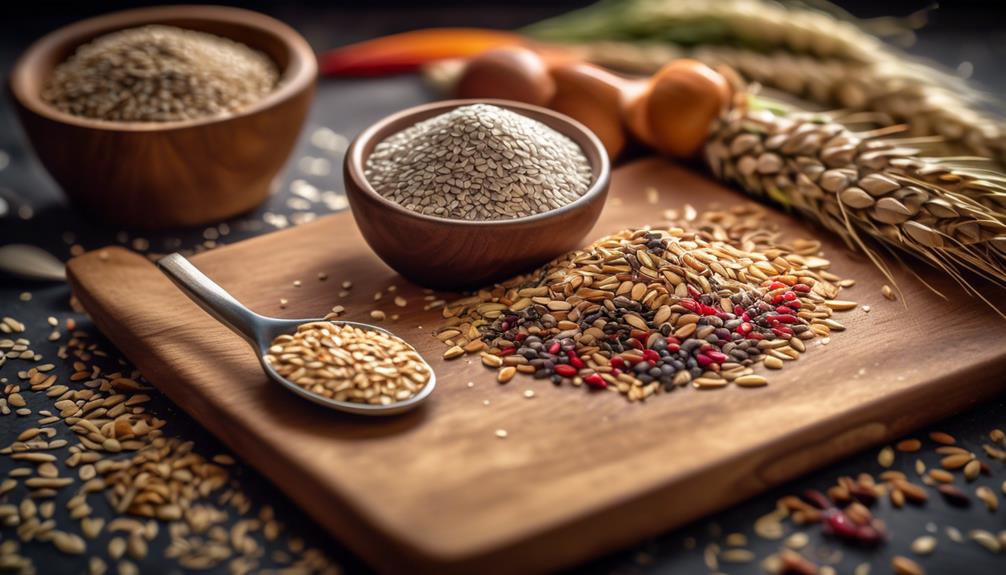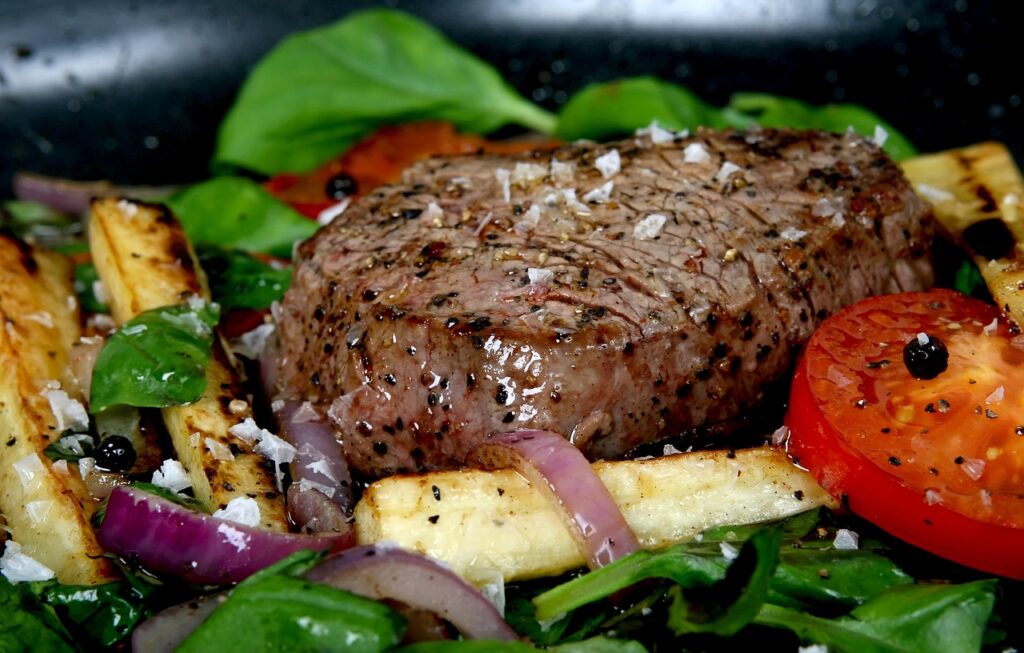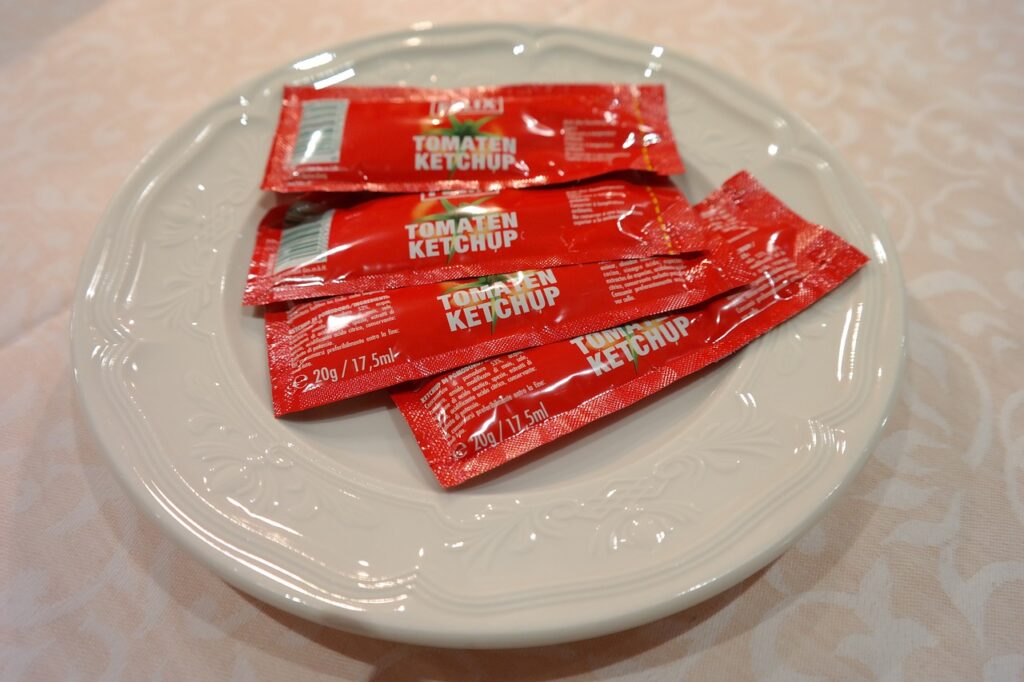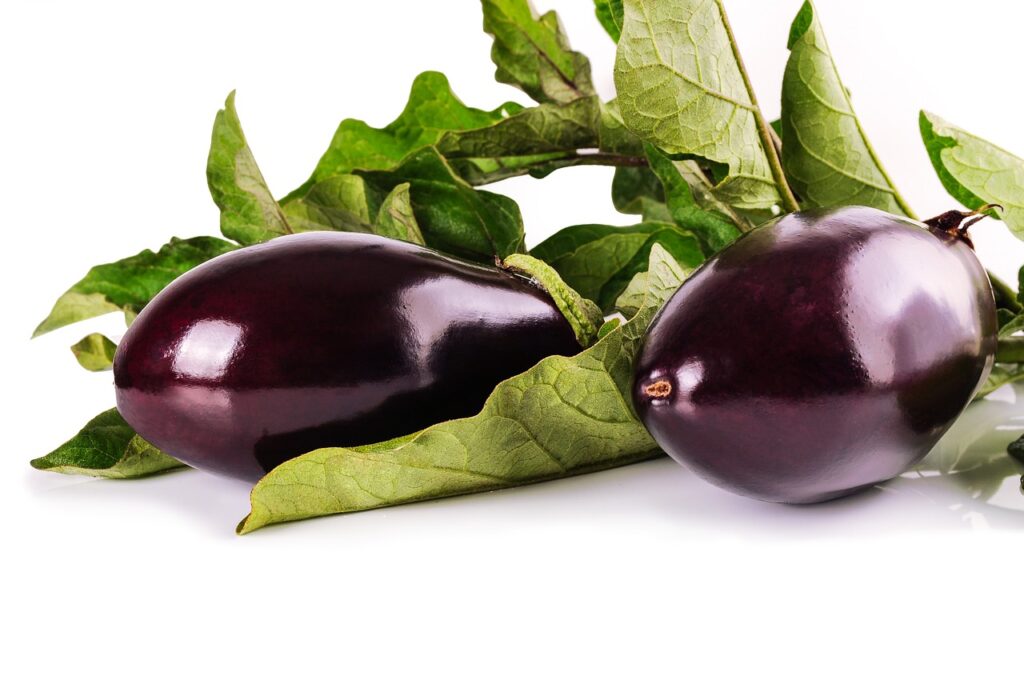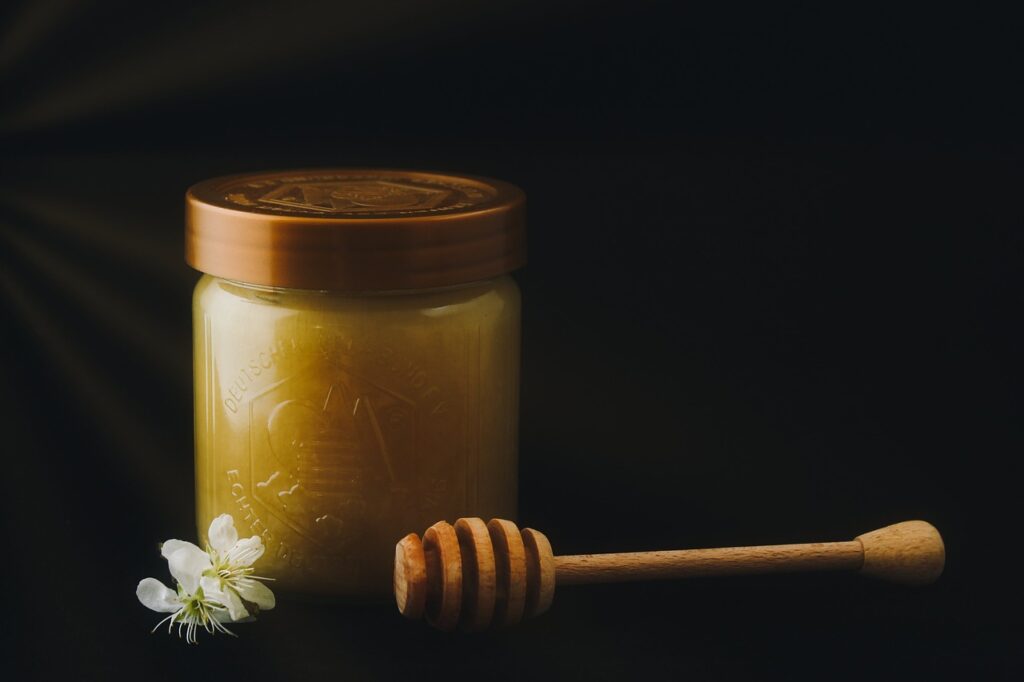If you're on a low-carb diet and missing the comforting texture of grains, fear not! There are plenty of keto-friendly grain alternatives out there that can satisfy your cravings without derailing your progress.
These alternatives are like secret weapons in your culinary arsenal, allowing you to create delicious meals that are both nutritious and satisfying.
But which ones should you choose? Well, keep reading to discover the top keto-friendly grain alternatives that will make you rethink your relationship with carbs.
Cauliflower Rice
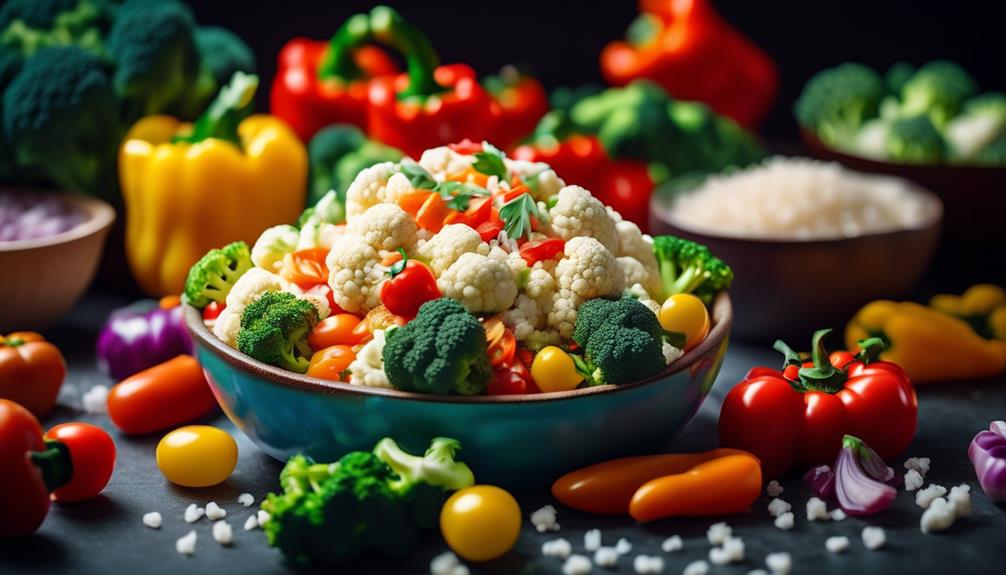
If you're looking for a low-carb alternative to traditional rice, cauliflower rice is a versatile and nutritious option. Made by finely chopping cauliflower into small rice-like pieces, it offers a similar texture and can be used in a variety of dishes.
Cooking cauliflower rice is quick and easy. One popular method is to sauté it in a pan with a bit of oil or butter until it becomes tender. Another option is to steam it, either in a steamer basket or in the microwave.
To add flavor to cauliflower rice, you can experiment with various seasonings and ingredients. For a simple and classic taste, try adding garlic, salt, and pepper. If you prefer a more vibrant flavor, consider adding herbs like parsley or cilantro, or even a squeeze of lemon juice. To make it more filling, you can mix in cooked vegetables, such as peas or carrots.
Ultimately, the cooking techniques and flavor variations for cauliflower rice are endless, allowing for endless possibilities in creating delicious low-carb meals.
Coconut Flour
To continue exploring grain alternatives for low-carb diets, let's now turn our attention to coconut flour. Coconut flour is a versatile and nutritious option that can be a great substitute for traditional grain flours. It's made from dried coconut meat that has been ground into a fine powder.
One of the benefits of using coconut flour is its low carb content. It contains just 6 grams of carbs per ounce, making it an excellent choice for those following a low-carb or ketogenic diet. Additionally, coconut flour is high in fiber, with about 5 grams per ounce. Fiber is important for digestion and can help you feel fuller for longer.
Coconut flour can be used in a variety of recipes, from baked goods to savory dishes. It adds a subtle coconut flavor and a light, fluffy texture. Some popular coconut flour recipes include pancakes, muffins, and bread. You can also use it as a coating for chicken or fish to add a crispy, flavorful crust.
Almond Flour
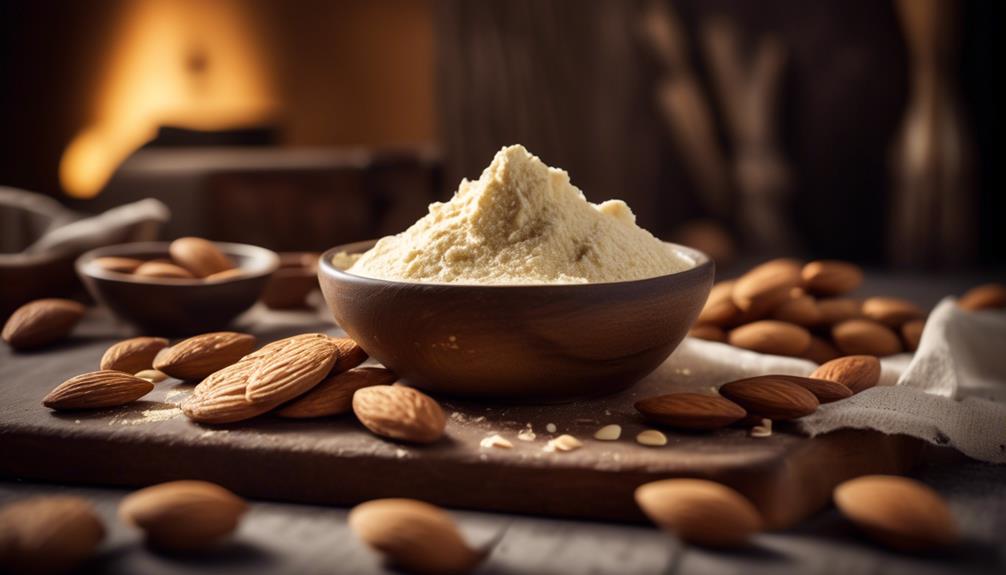
Almond flour is a versatile and nutritious grain alternative that can be a great addition to low-carb diets. Made from ground almonds, it's naturally gluten-free and packed with essential nutrients. One of the key benefits of almond flour is its low carbohydrate content. Compared to traditional wheat flour, almond flour contains significantly fewer carbs, making it an excellent choice for those following a low-carb or keto diet. Additionally, almond flour is rich in healthy fats, fiber, and protein, which can help keep you feeling full and satisfied.
When it comes to using almond flour in recipes, the possibilities are endless. It can be used as a replacement for wheat flour in baking, making it a great option for those who are gluten intolerant or have celiac disease. Almond flour can be used to make delicious and nutritious baked goods like cookies, cakes, and muffins. It can also be used as a coating for meats or as a thickener in sauces and gravies.
To make almond flour at home, simply grind blanched almonds in a food processor until they reach a fine, flour-like consistency. Store it in an airtight container in the refrigerator to maintain freshness. Whether you're looking to reduce your carb intake or experiment with new flavors, almond flour is a fantastic choice for adding both nutrition and taste to your low-carb recipes.
Chia Seeds
Chia seeds, packed with essential nutrients, are a versatile and nutritious addition to low-carb diets. These tiny seeds are a great source of fiber, protein, and healthy fats, making them an excellent choice for those following a keto or low-carb eating plan.
One of the many benefits of chia seeds is their ability to absorb liquid and form a gel-like consistency, which makes them a popular ingredient for cooking and baking. You can use chia seeds as an egg substitute in recipes by combining one tablespoon of chia seeds with three tablespoons of water and letting it sit for a few minutes until it thickens.
Additionally, chia seeds can be incorporated into smoothies to add an extra nutritional boost. Simply blend them with your favorite fruits, vegetables, and liquids for a delicious and filling smoothie.
With their neutral taste and impressive nutrient profile, chia seeds are a must-have for anyone looking to enhance the nutritional value of their low-carb diet.
Flaxseed Meal
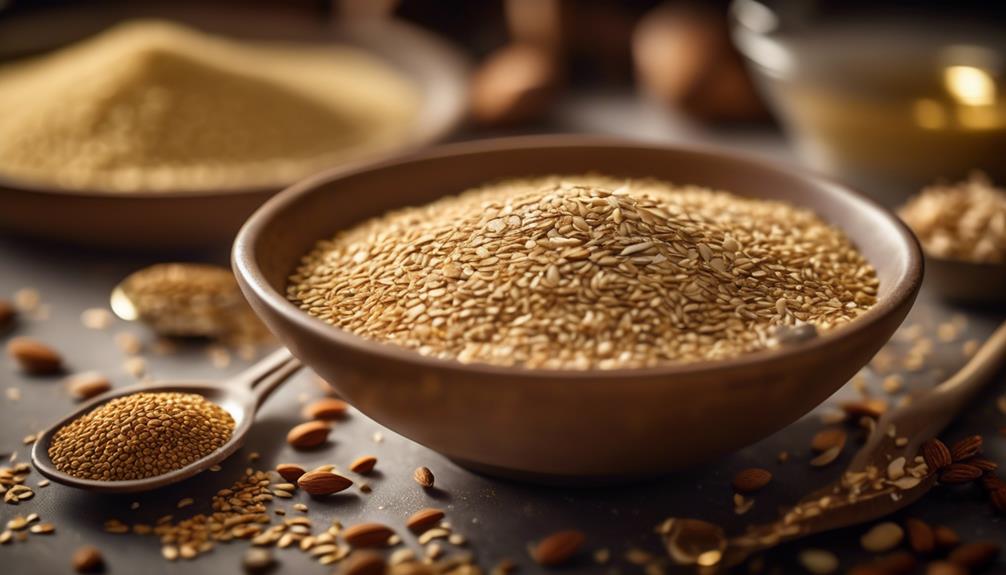
If you're looking for another nutrient-packed grain alternative to add to your low-carb diet, consider incorporating flaxseed meal into your meals and recipes. Flaxseed meal is made by grinding flaxseeds into a fine powder, and it offers a wide range of health benefits.
Here are three reasons why you should consider adding flaxseed meal to your diet:
- Rich in Omega-3 Fatty Acids: Flaxseed meal is an excellent source of alpha-linolenic acid (ALA), a type of omega-3 fatty acid. Omega-3 fatty acids have been shown to reduce inflammation, support heart health, and improve brain function.
- High in Fiber: Flaxseed meal is packed with dietary fiber, which can aid in digestion and help you feel fuller for longer. Incorporating flaxseed meal into your meals can be a great way to increase your fiber intake and support healthy digestion.
- Versatile Ingredient for Low-Carb Recipes: Flaxseed meal can be used as a low-carb substitute for flour in many recipes, making it a great option for those following a low-carb or keto diet. You can use it to make pancakes, muffins, bread, and even as a coating for chicken or fish.
Incorporating flaxseed meal into your meals and recipes can provide you with a wide range of health benefits and add a nutty flavor to your dishes. Try experimenting with different flaxseed meal recipes to discover how it can enhance your low-carb diet.
Shirataki Noodles
Let's talk about the cooking methods for Shirataki noodles and the health benefits they offer.
Shirataki noodles can be cooked by boiling them for a few minutes or stir-frying them with your favorite ingredients.
These noodles are low in carbs and calories, making them an excellent option for those following a low-carb diet.
Additionally, Shirataki noodles are high in fiber and can help you feel fuller for longer, aiding in weight management.
Cooking Methods for Shirataki
To enhance the taste and texture of Shirataki noodles, try experimenting with different cooking methods. Here are three cooking techniques and recipe ideas to help you make the most of this low-carb alternative:
- Boiling: Start by boiling the noodles for a few minutes to remove any lingering odor. This will also help soften them up and make them more enjoyable to eat. Once boiled, drain and rinse the noodles before adding them to your favorite stir-fry or soup recipes.
- Pan-frying: Give your Shirataki noodles a crispy texture by pan-frying them in a little oil. Heat a non-stick pan, add the noodles, and cook until they turn golden brown. This method works well for creating a noodle base for dishes like Pad Thai or Chow Mein.
- Baking: For a different twist, try baking your Shirataki noodles in the oven. Toss them with some olive oil, salt, and spices, then spread them out on a baking sheet. Bake at a low temperature until they become crispy and resemble chips. These can be a great low-carb alternative to regular potato chips.
Health Benefits of Shirataki
After exploring different cooking methods for Shirataki noodles, let's now explore the health benefits of this low-carb alternative.
Shirataki noodles aren't only a great option for those following a low-carb diet, but they also offer several health benefits.
One of the main benefits of Shirataki noodles is their low calorie and carbohydrate content. They're made primarily of water and a dietary fiber called glucomannan, which can help promote feelings of fullness and aid in weight management.
Additionally, Shirataki noodles have been found to have a positive impact on blood sugar levels, making them suitable for individuals with diabetes or those looking to control their blood sugar.
Furthermore, the dietary fiber in Shirataki noodles can help support healthy digestion by promoting regular bowel movements and preventing constipation. It also acts as a prebiotic, feeding the good bacteria in your gut and supporting a healthy microbiome.
Zucchini Noodles
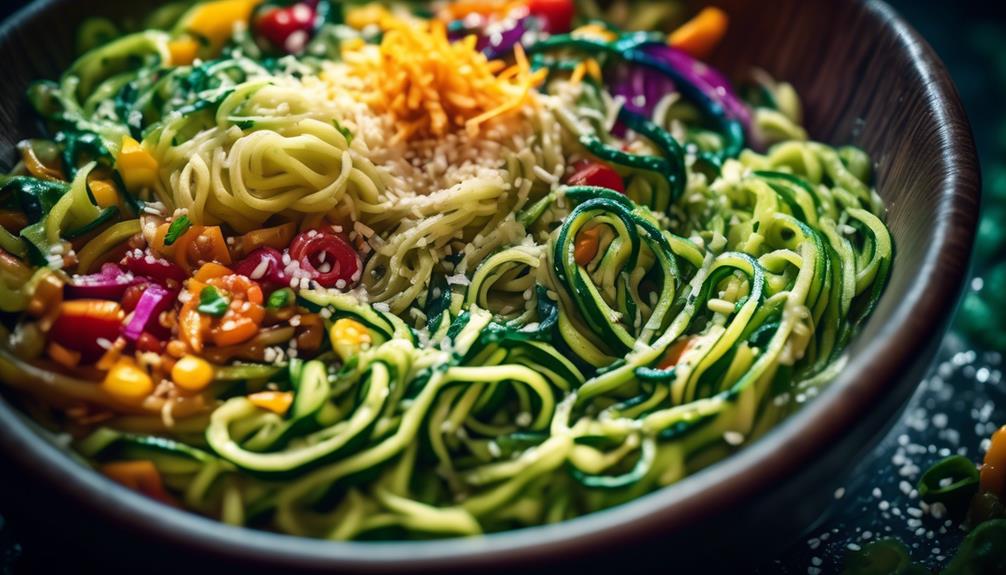
Zucchini noodles, also known as zoodles, offer a versatile and nutritious grain alternative for those following a low-carb diet. These spiralized strands of zucchini aren't only easy to make but also provide a host of health benefits. Here are three reasons why zucchini noodles should be a staple in your low-carb cooking repertoire:
- Cooking techniques: Zucchini noodles can be prepared in various ways, allowing you to enjoy a range of textures and flavors. You can sauté them in olive oil for a quick and simple side dish, or toss them with your favorite sauce for a low-carb pasta alternative. They can even be used in stir-fries or added to soups for a nutritious boost.
- Nutritional value: Zucchini noodles are low in calories and carbs, making them an ideal choice for those watching their waistline. They're also rich in vitamins A and C, potassium, and fiber, which are essential for maintaining a healthy diet. Additionally, zucchini noodles are gluten-free and suitable for individuals with dietary restrictions.
- Versatility: Zucchini noodles can be used as a substitute for traditional pasta in a wide range of dishes. Whether you're craving a classic spaghetti bolognese or a refreshing summer salad, zoodles can provide the perfect base. They add a light and fresh element to your meals while keeping your carb intake in check.
Coconut Wraps
If you're looking to expand your repertoire of low-carb grain alternatives, coconut wraps are an excellent choice. Made from coconut meat and water, these wraps are a versatile option for those following a low-carb or ketogenic diet. Not only are they low in carbs, but they're also gluten-free and grain-free, making them suitable for individuals with dietary restrictions.
Coconut wraps can be used in a variety of recipes, from savory to sweet. For a delicious breakfast option, try filling a coconut wrap with scrambled eggs, avocado, and bacon. If you're in the mood for something savory, fill the wrap with grilled chicken, lettuce, and your favorite low-carb dressing. For a sweet treat, spread almond butter on a coconut wrap and top it with sliced strawberries and a sprinkle of cinnamon.
One of the great things about coconut wraps is the wide range of flavor variations available. Some brands offer wraps that are infused with herbs and spices, such as turmeric or garlic, adding an extra layer of flavor to your dish. Additionally, you can experiment with different fillings and seasonings to create unique and tasty combinations.
Hemp Hearts
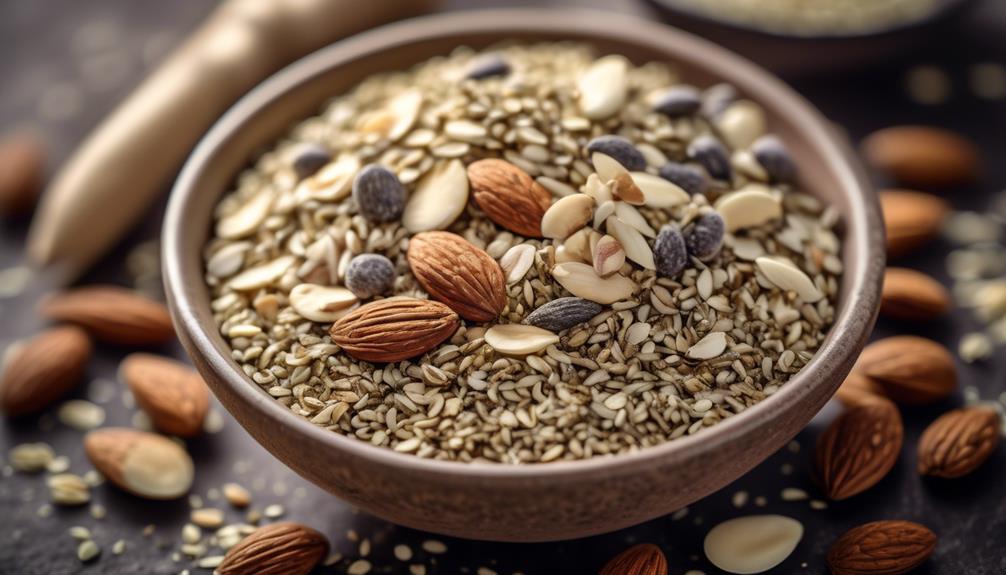
Hemp hearts are a nutritious and versatile ingredient that can be incorporated into a low-carb diet. They offer several nutritional benefits and can be used in various ways in the kitchen.
Here are three reasons why you should consider cooking with hemp hearts:
- High in protein: Hemp hearts are a great source of plant-based protein, making them an excellent alternative for those following a low-carb diet. Just three tablespoons of hemp hearts contain around 10 grams of protein, providing you with a substantial amount to support muscle growth and repair.
- Rich in healthy fats: Hemp hearts are packed with essential fatty acids, including omega-3 and omega-6. These healthy fats are beneficial for heart health and can help reduce inflammation in the body. Incorporating hemp hearts into your meals can contribute to a well-rounded, low-carb diet while providing you with essential nutrients.
- Nutrient-dense: Hemp hearts aren't only a good source of protein and healthy fats but also contain a range of vitamins and minerals. They're rich in vitamin E, magnesium, phosphorus, and potassium, which are essential for overall health and well-being.
Psyllium Husk
Psyllium husk is a beneficial ingredient to consider incorporating into your low-carb diet. This natural fiber source offers numerous health benefits and can be a versatile addition to your baking recipes.
One of the main benefits of psyllium husk is its high fiber content. Just one tablespoon of psyllium husk can provide up to 5 grams of fiber, which is essential for maintaining a healthy digestive system and promoting regular bowel movements. The fiber in psyllium husk can also help to lower cholesterol levels and regulate blood sugar levels, making it an excellent choice for those following a low-carb diet.
When it comes to baking, psyllium husk can be used as a substitute for high-carb ingredients like flour. Its binding properties make it a great replacement for gluten in recipes, helping to improve the texture and structure of baked goods. Additionally, psyllium husk can help to increase the fiber content of your baked goods, making them more filling and satisfying.
To incorporate psyllium husk into your low-carb diet, you can add it to smoothies, yogurt, or even use it as a thickening agent in soups and sauces. When using psyllium husk in baking, start with small amounts and gradually increase as needed to achieve the desired texture. Remember to drink plenty of water when consuming psyllium husk to avoid any potential digestive discomfort.
Conclusion
In conclusion, incorporating keto-friendly grain alternatives into a low-carb diet can provide a variety of options while still maintaining a healthy eating plan.
For example, Sarah, a woman with a busy schedule, found that replacing regular rice with cauliflower rice helped her stay on track with her weight loss goals while still enjoying her favorite meals.
These alternatives not only offer lower carbohydrate content but also provide essential nutrients, making them a great choice for those following a low-carb lifestyle.

